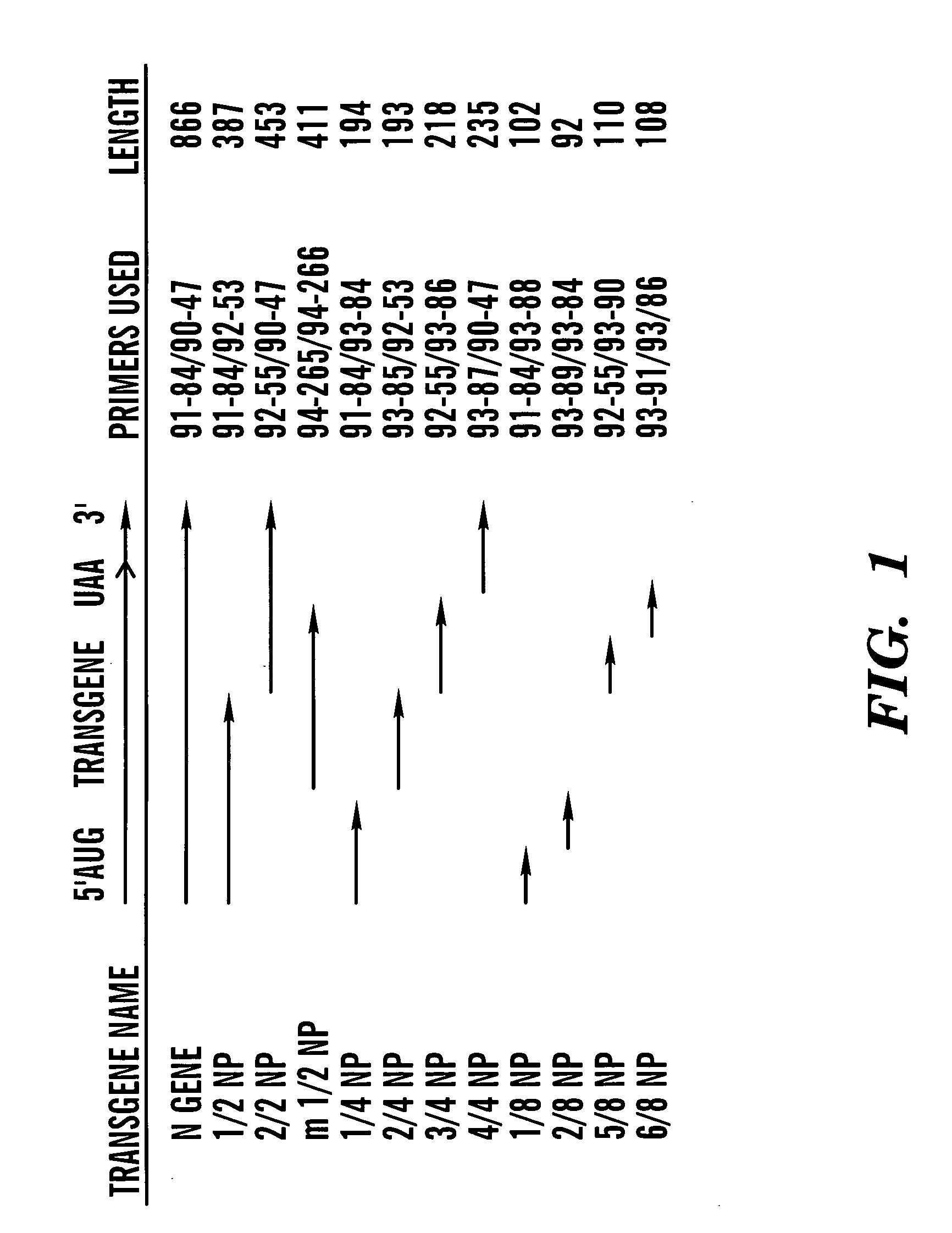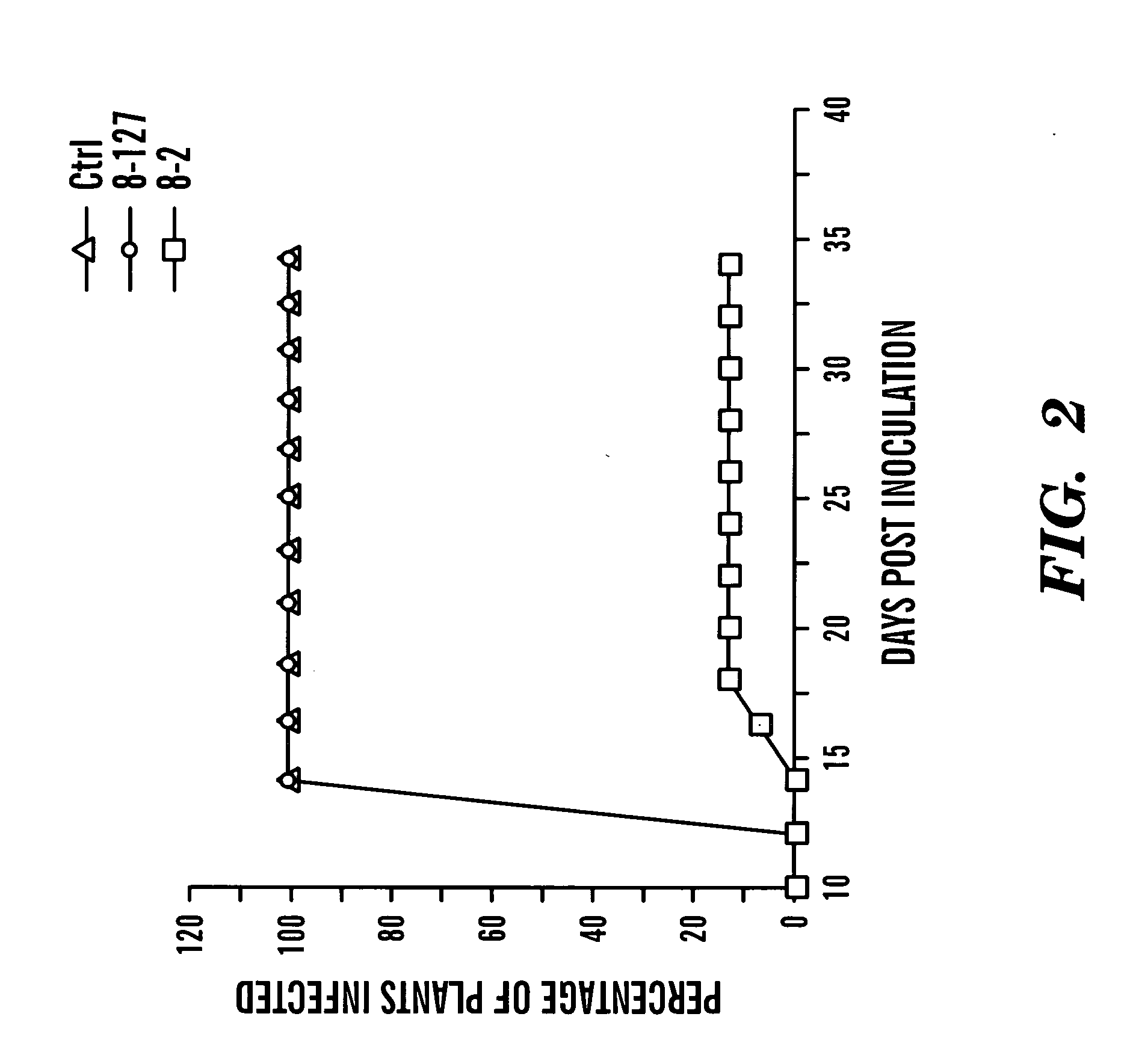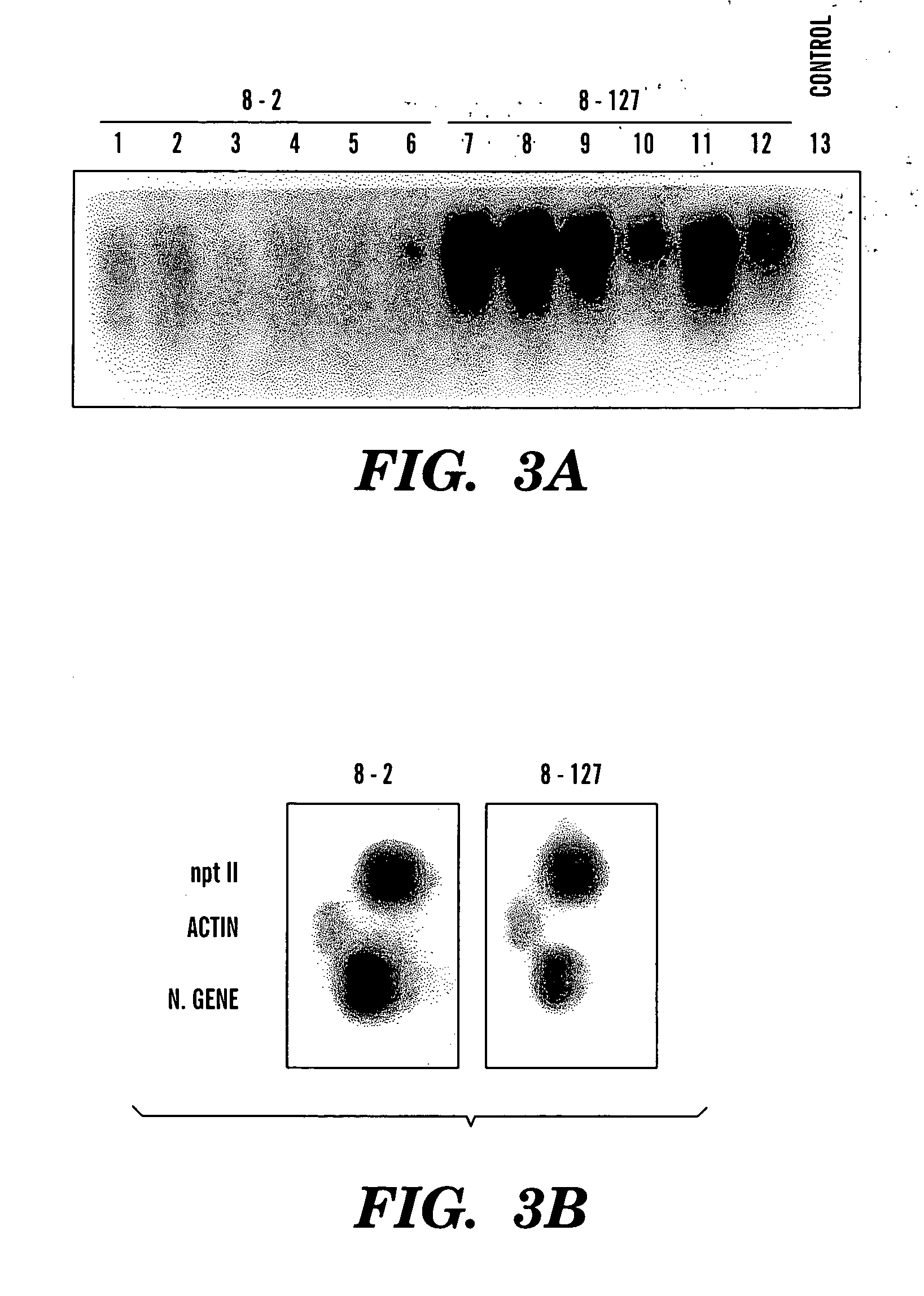DNA construct to confer multiple traits on plants
a technology of dna and plants, applied in the field of dna constructs to confer multiple traits on plants, can solve the problems of complex structure, high cost and time consumption, and difficulty in incorporating multiple virus resistance in a given plant, and achieve the effect of distributing resistan
- Summary
- Abstract
- Description
- Claims
- Application Information
AI Technical Summary
Benefits of technology
Problems solved by technology
Method used
Image
Examples
example 1
Cloning and Transformation
[0065] The N gene (Pang, S.-Z., et al., “Resistance to Heterologous Isolates of Tomato Spotted Wilt Virus in Transgenic Plants Expressing its Nucleocapsid Protein Gene,”Phytopathology, 82: 1223-29 (1992), which is hereby incorporated by reference) of the lettuce isolate of tomato spotted wilt virus (TSWV-BL) was used as the template for construction of the N gene fragments of various lengths using the primers listed in Table 1.
TABLE 1Primers used in cloningNamePositions1SequenceFor the N gene fragments91-842776-27445′-AGCTAATCTAGAACCATGGATGACTCACTAAGGAAAGCATTGTTGC(SEQ. ID. NO. 1)93-892669-26505′-TACAGTTCTAGAACCATGGTCTGGAAAACCTTGACCAG(SEQ. ID. NO. 2)93-852576-25565′-TACAGTTCTAGAACCATGGTAAAGCGATTTTACTTTTGGTA(SEQ. ID. NO. 3)92-552373-23545′-AGATTCTCTAGACCATGGTGACTTGATGAGCAAAGTCTGTGAGGCTTGC(SEQ. ID. NO. 4)93-912266-22485′-TACAGTTCTAGAACCATGGAAAATACAAGGATCTCGGG(SEQ. ID. NO. 5)93-872153-21335′-TACAGTTCTAGAACCATGGTAGAAGGGGAAAGAGTATGCTG(SEQ. ID. NO. 6)90-471918-...
example 2
ELISA, Northern Blot Analyses of Transgenic Plants
[0069] Double antibody sandwich enzyme-linked immunosorbent assay (“DAS-ELISA”) was used to detect the nptII enzyme in transgenic plants using an nptII ELISA kit (5 Prime to 3 Prime, Inc). Northern blot was performed as described previously (Pang, S. Z., et al., “Different Mechanisms Protect Transgenic Tobacco Against Tomato Spotted Wilt and Impatiens Necrotic Spot Tospoviruses,”Bio / Technology, 11: 819-24 (1993), which is hereby incorporated by reference).
example 3
Inoculation of Transgenic Plants
[0070] Inoculations were done as described previously (Pang, S.-Z., et al., “Resistance to Heterologous Isolates of Tomato Spotted Wilt Virus in Transgenic Plants Expressing its Nucleocapsid Protein Gene,”Phytopathology, 82: 1223-29 (1992), which is hereby incorporated by reference). Systemic symptoms were recorded every other day for at least two months.
PUM
| Property | Measurement | Unit |
|---|---|---|
| length | aaaaa | aaaaa |
| viral disease resistance | aaaaa | aaaaa |
| Resistance | aaaaa | aaaaa |
Abstract
Description
Claims
Application Information
 Login to View More
Login to View More - R&D
- Intellectual Property
- Life Sciences
- Materials
- Tech Scout
- Unparalleled Data Quality
- Higher Quality Content
- 60% Fewer Hallucinations
Browse by: Latest US Patents, China's latest patents, Technical Efficacy Thesaurus, Application Domain, Technology Topic, Popular Technical Reports.
© 2025 PatSnap. All rights reserved.Legal|Privacy policy|Modern Slavery Act Transparency Statement|Sitemap|About US| Contact US: help@patsnap.com



